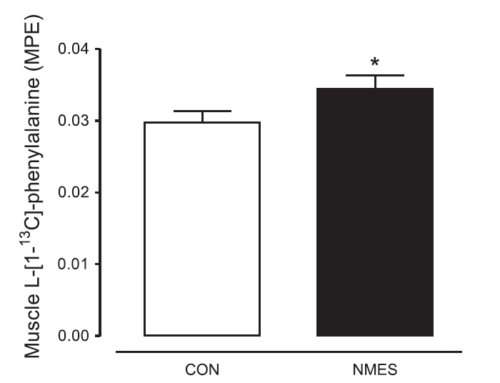Project omschrijving
Sports Medicine |September 2016 |
Abstract:
Hyperaminoacidemia following protein ingestion enhances the anabolic effect of resistance-type exercise by increasing the stimulation of muscle protein synthesis and attenuating the exercise-mediated increase in muscle protein breakdown rates. Although factors such as the source of protein ingested and the timing of intake relative to exercise can impact post-exercise muscle protein synthesis rates, the amount of protein ingested after exercise appears to be the key nutritional factor dictating the magnitude of the muscle protein synthetic response during post-exercise recovery. In younger adults, muscle protein synthesis rates after resistance-type exercise respond in a dose-dependent manner to ingested protein and are maximally stimulated following ingestion of ~20 g of protein. In contrast to younger adults, older adults are less sensitive to smaller doses of ingested protein (less than ~20 g) after exercise, as evidenced by an attenuated increase in muscle protein synthesis rates during post-exercise recovery. However, older muscle appears to retain the capacity to display a robust stimulation of muscle protein synthesis in response to the ingestion of greater doses of protein (~40 g), and such an amount may be required for older adults to achieve a robust stimulation of muscle protein synthesis during post-exercise recovery. The aim of this article is to discuss the current state of evidence regarding the dose-dependent relationship between dietary protein ingestion and changes in skeletal muscle protein synthesis during recovery from resistance-type exercise in older adults. We provide recommendations on the amount of protein that may be required to maximize skeletal muscle reconditioning in response to resistance-type exercise in older adults.
Auteurs: Churchward-Venne TA1, Holwerda AM1, Phillips SM2, van Loon LJ3.
Affiliates: 1Department of Human Movement Sciences, NUTRIM School for Nutrition and Translational Research in Metabolism, Maastricht University Medical Centre+ (MUMC+), Maastricht, The Netherlands.2Exercise Metabolism Research Group, Department of Kinesiology, McMaster University, Hamilton, ON, Canada.3Department of Human Movement Sciences, NUTRIM School for Nutrition and Translational Research in Metabolism, Maastricht University Medical Centre+ (MUMC+), PO Box 616, 6200 MD, Maastricht, The Netherlands
Link to whole article







